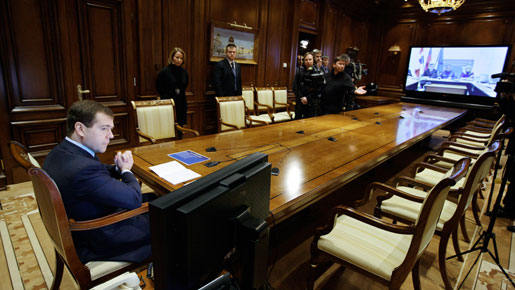
Video conferencing has indeed come of age with the emergence of high definition technology and IP enabled networks. The key players in the market are providing state of the art video conferencing and telepresence solutions; and with each new product, the technology and usability just gets better and better. So why is it that the deployment of video conferencing across many organisations is taking so long?
Cost is a key factor – with a telepresence room costing in the region of €400,000 to install, the capital investment can be a tough sell, even though the return on investment is proven and tested. Experience is a key factor, and we’re not talking about the pleasant side of the experience scale. Too many historical users of video conferencing have burning memories of fuzzy screens, inaudible audio and time delayed responses to their hilarious jokes. To top all that, it took their entire IT department to get the call going in the first place.
Space is a key factor. Video conferencing kit is too often found within the hallowed domains of the boardroom, making it under utilised due to the restraints on access to such territory. Telepresence rooms require a larger investment, so they are often not seen as a company wide tool, but a tool of the top tiers of management. The under utilisation is often exacerbated by the fact that the environment into which the technology is placed is not suitable – beautiful glazed partitions and panoramic views are not natural bed fellows for video conferencing technology. To add to the inefficiency, when video conferences are held, they normally involve three or four people sitting in a room designed to hold 20-30 people – not a great return on the real estate investment.
So how can these problems be overcome and how can video conferencing truly become an affordable, reliable, democratic and valuable business tool? These problems defined the emergence of vpod solutions. The team at vpod have developed video conferencing environments that provide truly immersive video conferencing experiences. Their aim is to take all of the negativity that surrounds video conferencing and use it to define the design criteria for their products.
The first of their products to come to the market is the v3. It comprises a room designed to meet the perfect environmental setting for high definition video conferencing. It includes auto adjusting fully controllable daylight lighting, acoustic protection, built-in air conditioning, HD ready technology and integrated furnishings. As all of the key environmental factors are integrated into the design of the vpod, there is no need to integrate it into the building in which it is placed. It can therefore be installed anywhere, in any environment. So, if a business has ever wondered what to do with the acres of space in that beautiful atrium, or the unattractive space in that basement, vpod may well be the answer. The vpod v3 footprint is only 7.54sq m, so offers a really efficient use of space.
The products that vpod have developed provide fully controlled environments, so they are not affected by their surroundings or by human error. Once the vpod is installed, and the technology enabled, the only thing that the user needs to worry about is making the call. So, why not just build a traditional room in which to place the video conferencing technology? The question can be answered in many ways – vpods can be installed in just one day with no construction activities required. They are not reliant upon existing environment design criteria – e.g. no considerations required for effects from natural light, lack of light, artificial light, acoustics, finishes, window positions, and varying wall, ceiling and floor types.
Deployment is possible globally and vpods ensure a consistent, uniformed and controlled environment no matter where they are. It matters not if your colleague is in Mumbai, Melbourne, Manila or Manchester, they will feel like they are in the same room. In this way, global anomalies in building structures and interiors need not affect the immersive experience that your video conferencing technology has the ability to provide.
As vpods are free standing and can be relocated, there is generally no requirement for landlord’s consent and will not impact dilapidation liabilities when removed or relocated. In addition, they can be financed through operational rather than capital budgets. So, the technology is there and now the perfect environment is possible. What is the real gain and what are the real benefits of making video conferencing a truly viable travel replacement?
For vpod, a key motivator for designing their products is the impact that they can have on mitigating the effects of climate change. Last year, there were 65 million business flights into the UK – vpod solutions want to play a role in reducing that number and therefore the effect that business travel has on climate change. To that end, they have formed an alliance with the charity Change for Climate Change. They are working together to ensure that each purchase of a vpod product makes a positive contribution towards the mitigation of the effects of climate change, not only through vpod product usage, but also through the contribution of part of their revenue to the charity.
For the user of vpod products, they can reduce their carbon footprint by swiftly deploying video conferencing across their entire organisation at an affordable cost. They can use the purchases as a credible element of their corporate social responsibility programme. They can offer all of their employees a better quality of life through negating the need for business travel. Through the immersive nature of the environments, vpod really does provide a viable travel replacement.
*Source, Kresse Wesling, environmental entrepreneur and founder of the charity Change for Climate Change

